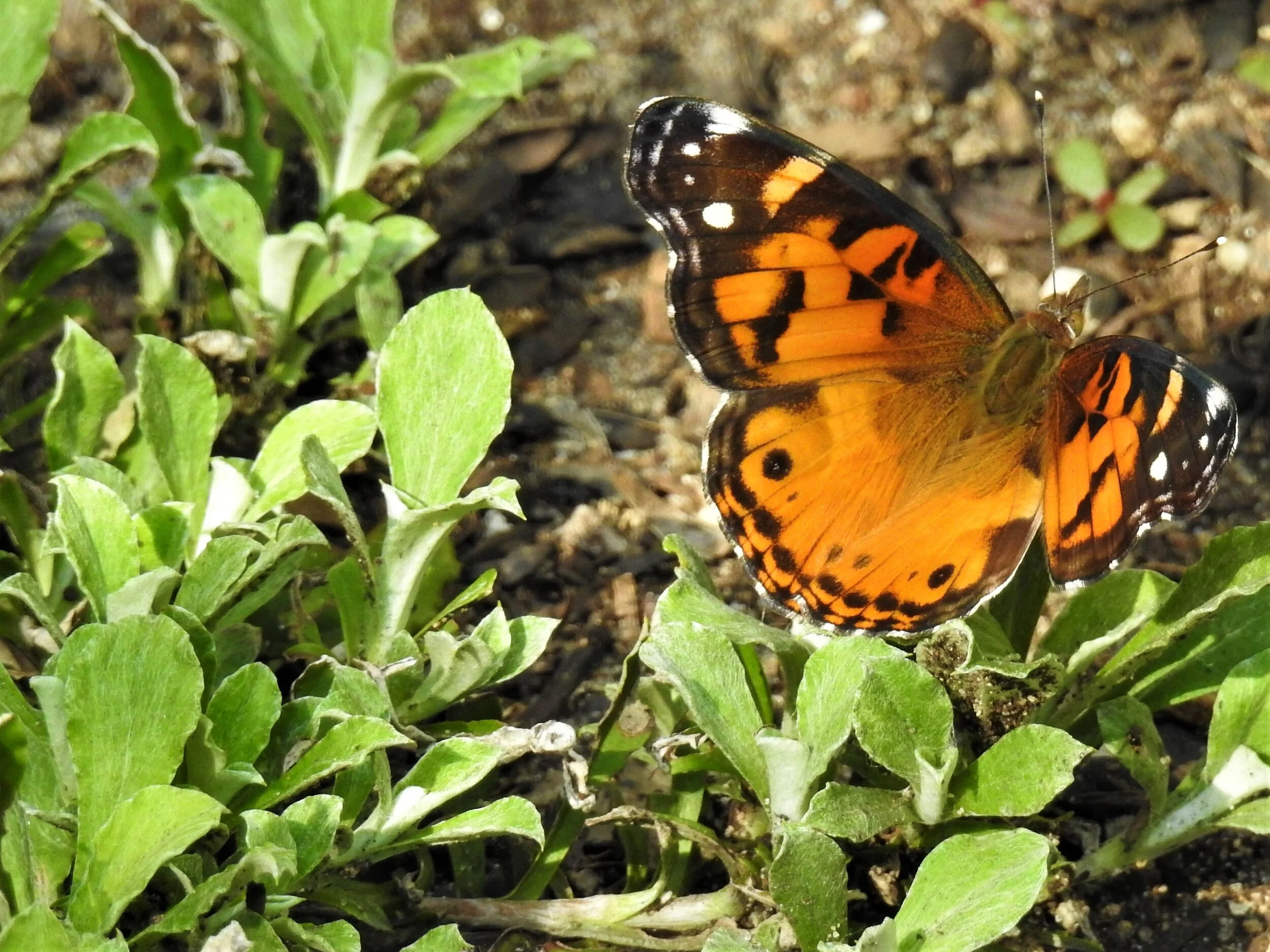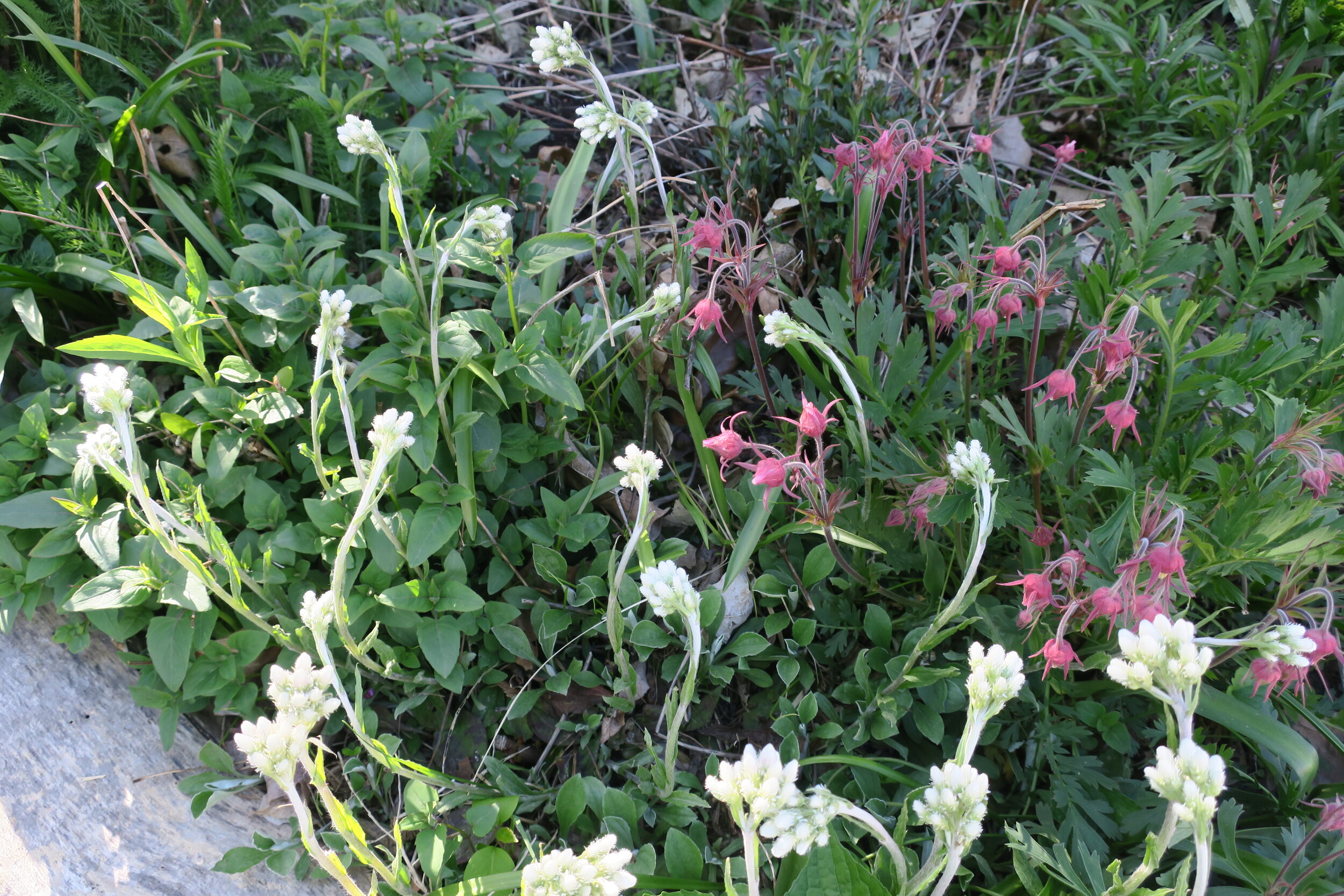One of the toughest of the tough, field pussytoes (Antennaria neglecta) is a great alternative to lawn grass in sunny conditions. It will hold up to a bit of foot traffic (though not a baseball game or anything rigorous!) and spreads with virtually no maintenance.
Bonus: it’s drought tolerant!
American lady laying eggs of pussytoes. Photo by Mary Denington, used with permission.
Another bonus: it’s a larval host plant for the American lady butterfly!
So here’s an idea: remove some lawn area that you don’t use very much, plant some pussytoes, and grow some butterflies.
Field pussytoes and prairie smoke (Geum triflorum)
Field pussytoes (Antennaria neglecta)
Height: 4 in to 12 in
Flowers: white
Blooming period:early to mid-spring
Exposure: sun to partial sun
Soil:regular to dry; drought tolerant
Specialist pollinator interactions:larval host for American painted lady butterfly, everlasting bud midge, everlasting tebenna moth
Good combinations: prairie smoke, pearly everlasting, golden Alexanders, wild strawberry, blue-eyed grass
This drought-tolerant native is a good choice if you’re looking for a low-growing groundcover for sunny conditions. Unlike most native meadow species, not only does field pussytoes stay short, but it also blooms in spring. The white flowers, which are visited by bees and flies, complement the plant’s silvery foliage, and the fluffy seedheads are also decorative. Use it at the front of the border so it doesn’t get lost in the exuberant growth of surrounding plants. A bonus—field pussytoes does just fine in poor soil. And yes, as its common name suggests, the flower clusters at the end of the flowering stalks do, indeed, look like a cat’s furry paw. A closely related native species is plantain-leaved pussytoes (A. parliniissp. fallax).



